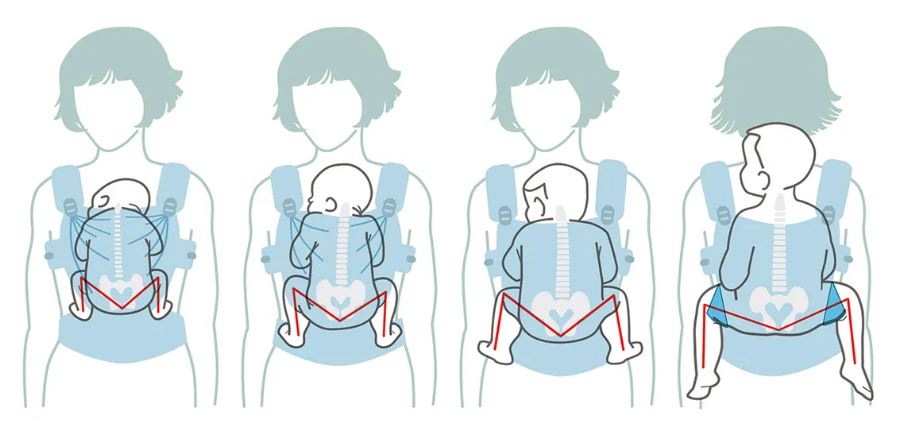The key to getting a good position for your baby in their carrier is the 'Pelvic Tuck'. This is a quick and simple trick that helps get an ergonomic posiiton, regardless of the carrier you are using. It's useful to note that while some carriers are easier to get a good position, it's also quite possible to plonk your baby into the most expensive ergonomic carrier and still not have their hips well supported if you don't check their position!
Why is hip position important?
Your baby only only gets one set of hips and they need to last their whole life! Protecting the hip health of your baby is so important in the first few months as their joints are still growing and developing.
Some babies are quickly disagnosed as having hip dysplasia and start treatment with a specialist. But there's also an unknown number of babies where their loose hips are not formally identified and treated as hip dysplasia and damage may unintentially be done that causes significant pain later in life.
Babies can have hip issues of a wide range of severity. In some children, the ligaments around the hip joint are loose allowing the hip to subluxate. This is when the ball is no longer centered in the socket. Other times the ball is slightly or completely dislocated from the socket.
So while it's pretty well known that babies with a pre-disposition to hip dysplasia need to be carried in an ergonomic carrier rather than a narrow-based unsupportive carrier, it's also now known that many babies are left to 'wait and see' what happens with their hips or potential issues are just not picked up - an estimated 15% of hip problems are not picked up as they could only be detected by ultrasound and this is not routinely done on all babies.
What does this mean for using a carrier?
- Given an estimated 15% of hip problems are not detected, always ensure your baby's hips are in a good position.
- You can easily get your baby into a good position by doing a pelvic tuck, regardless of what model or type of carrier you use.
- Choose a carrier that more easily supports your little one in the 'M' position, where their knees are higher than their bottom. This supports their hips into much the same position as a harness does for treating hip problems.
- Avoid carriers that put all baby's weight on their crotch and has their legs hanging straight down. Carriers with that position mean gravity is potentially pulling your baby's legs out of their hip sockets.
- If you do choose to use a narrow-based carrier, see below for info on how to support your baby's hips with a scarf to create a 'knee to knee' position.
- If you use a front-facing position in a carrier, we recommend waiting until after 6 months when hip development stabilises. Also support your baby's feet or hold under their thighs to support their legs. Also keep any front-facing to short periods of time and only if there are definitely no hip issues.
Recommended carrier positions as baby grows

Learn more about this topic:
Boba interview with Dr Charles Price, International Hip Dysplasia Institute - click here
Dr Rosie Knowles, leading babywearing educator and GP busts some myths about hips and carrying - click here
